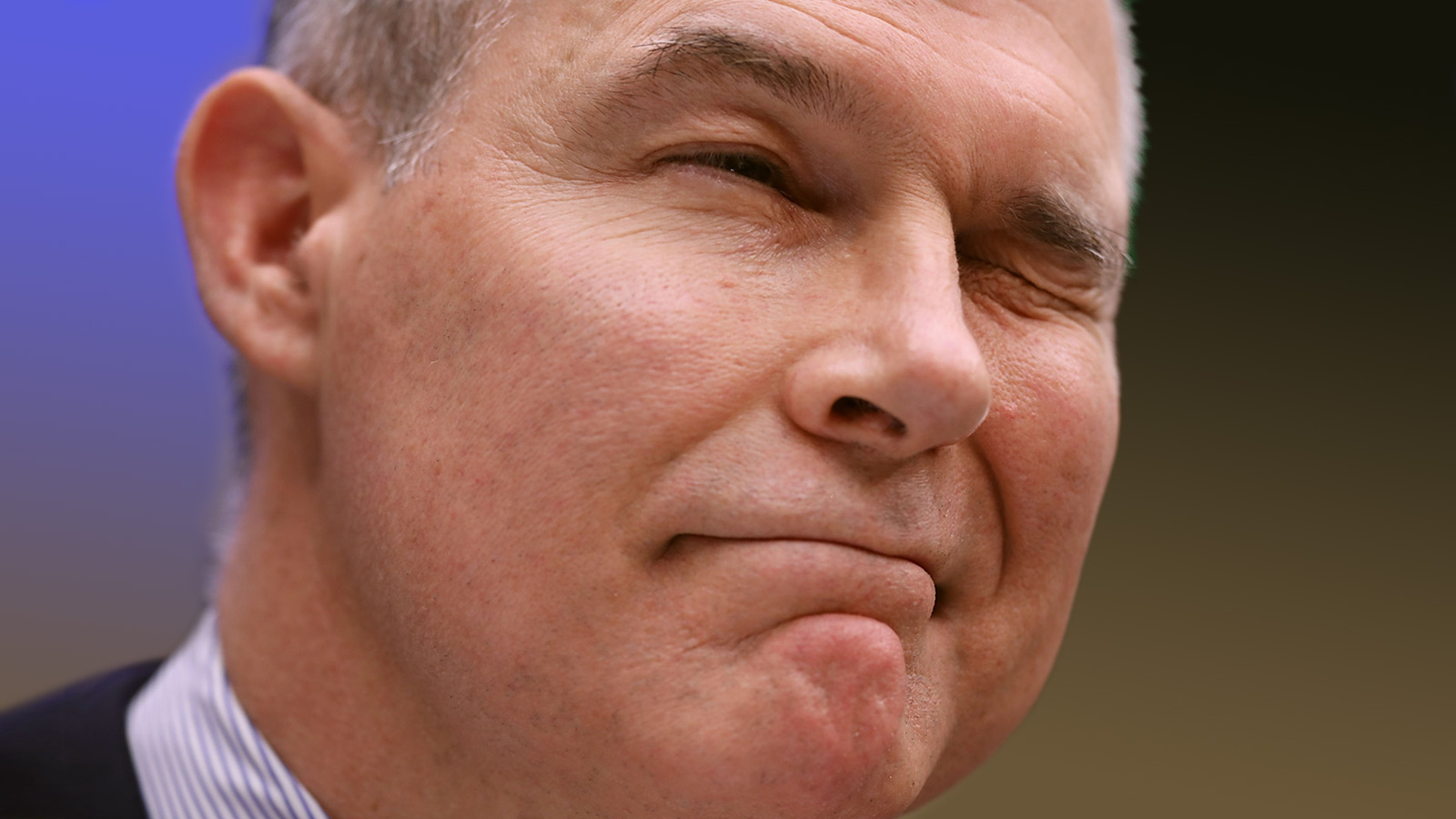There’s no debating that President Donald Trump’s Environmental Protection Agency, led until recently by the flagrantly corrupt Scott Pruitt, has dealt a series of woeful and lasting setbacks to our planet’s habitability.
With coal lobbyist Andrew Wheeler stepping in as interim EPA administrator, things probably won’t get better for federal environmental policy anytime soon. There’s a good chance Wheeler’s EPA will have fewer soundproof booths, cheaper pens, and a less-massive security detail. But Wheeler is on record saying his agenda will be the same as Pruitt’s. And a less scandal-ridden EPA administrator could do even more damage.
With all three branches of government stacked against them, environmental advocates have to focus on geographically-targeted policy. Luckily, it is a strategy that most are already accustomed to. So beyond the smog at the federal level, you can make out a constellation of small, but still massively consequential, sub-national victories emerging for champions of clean air and a stable climate.
Julie Cerqueira, the director of U.S. Climate Alliance, an association of state governors, points to recent successes in improving energy-efficiency standards and coordinating to build out zero-emission vehicle infrastructure. “There are strategic opportunities for the states to work together in ways that can help shift the market towards lower carbon and more resilient solutions for the nation,” she says.
The rapid rise of renewable energy means that the transportation sector is now the leading source of emissions in the U.S. So two groups of states on the West Coast and in the Northeast are already working together to “rapidly accelerate the adoption of electric vehicles and reduce transportation related greenhouse gas emissions,” says Sarah McKearnan, a policy advisor for Northeast States for Coordinated Air Use Management, a group advocating for better air quality.
Working against them is that one of the Trump EPA’s main goals is to undo Obama-era vehicle emission standards, a fight that will center on California due to the state’s status as a testbed for stricter motor vehicle regulations. Environmental groups are ready for the fight, having become more litigious in defending these regulations and other policies already on the books.
Pruitt’s “success” at the EPA was mostly in decimating staffing and morale, as well as eliminating science. But with Trump’s recent nomination of Brett Kavanaugh to replace Justice Anthony Kennedy, it’s likely the next Supreme Court won’t do much to stop the tearing down of regulations. To have any success, organizations suing on behalf of the environment will have to tailor their arguments to win over Chief Justice John Roberts, who now has the swing vote.
“We have sued Trump 77 times so far,” says Kassie Siegel, director of the Climate Law Institute at the Center for Biological Diversity. “The Trump administration is so beholden to the polluters they are supposed to be regulating that they make a lot of mistakes in their headlong rush to gut protections for our air, water, and health. Because of that, we’ve had many victories in court, and we’ll have many more.”
Luckily for greens, the environment is inherently local — and cities and states aren’t just passing policies the feds won’t, they’re also setting ambitious targets to tackle climate change. (That, you’ll recall, is the phenomenon that’s no longer mentioned by executive branch agencies.)
Since Trump was elected, more than 1,400 mayors have agreed to shift their cities to 100-percent renewable energy by 2035, in line with the goals of the Paris Agreement. Last fall, St. Louis became one of the biggest cities so far to set that lofty goal. The city of Berkeley, California, went even further recently, declaring an “existential climate emergency” and aiming for net-negative emissions by 2030.
It’s ambition like that, if realized, that will provide climate leadership for the rest of us in the Trump era. Meanwhile, Siegel, of the Center for Biological Diversity, is aiming her organization’s resources at least in part on making sure cities and states’ actions match their rhetoric.
“We are pushing the state of California, which is viewed as a model for climate leadership, to be a model worth following,” says Siegel. “In California, we have a moratorium on federal oil and gas leasing that has been in place since 2013, due to our litigation victories. We expect the Trump administration to try to restart leasing this summer. We will fight that in the street and in court.”
Sierra Club Legal Director Pat Gallagher says that both public opinion and the economics support his organization’s efforts to expand the use of renewable energy throughout the country.
“We’re using every means at our disposal to protect clean air, clean water, and healthy communities,” he explains. “We’re going to hold the line against rollbacks of environmental and public health protections by emphasizing that science and the law are on our side.”
The truth is, climate change is happening so fast that we can’t wait for a national-scale policy to slow it down. So rather, we should double down on this huge momentum throughout the country. We need bold, near-term leadership — and one good way to make that happen is with as many people in as many places as possible leading by example.



